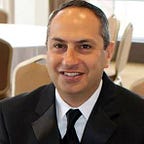Never heard of a DR Plan?
Unless you’ve worked in the IT department of a large corporation, you may never have heard of the term “DR Plan”. Though I don’t specialize in DR, I’ve worked in IT consulting for over 23 years, and have spent the last 20 years specializing in Siebel software — a Customer Relationship Management software (or CRM) used by large companies to do exactly that: manage customer touchpoints. Since this type of software is key to the day to day operations of most businesses, it is usually included in DR planning.
DR is an abbreviation for “disaster recovery”. Another analogous term for this is “business continuity”. All of this simply means: when a disaster strikes, how do we keep operations going and make money, keep people employed, and have as little or no disruption to our enterprise as possible. As you can imagine, like many other specialty areas within the specialty area of IT, DR planning is an industry of its own. There are numerous tools, guides, and products to assist companies in developing and executing DR plans.
Why have a DR plan in the first place? So that when a tornado knocks out your data center, life, i.e. business life, can go on. What does this all mean to you in the midst of a global pandemic? Much of the unpreparedness and under-preparedness you have been experiencing, to borrow slightly from Senator Elizabeth Warren, could have been avoided if we had a plan for that, specifically a DR plan.
A typical DR plan would consider, among the many logistical issues created by a disaster, how would the employees work. To grossly oversimplify with an example, this could be as simple as migrating employees away from desktop PCs and on to laptops. Developing and deploying a VPN so employees can connect remotely from home. Obviously, this is not a one-size fits all answer, so the plan would need to account for various scenarios, as well as various categories of employees. This is very similar to the problem we are working through of how will students learn if schools are closed. The answer, on the surface, is similar: get them on laptops, and get them connected to Google classroom, Khan Academy, and various other tools to assist in classroom instruction and assignments. Likewise, this is not a one-size fits all answer, as the solution for an urban school district will likely be different from a rural district.
Since a pandemic qualifies as a disaster, it’s beyond comprehension that we dismantled the resources in charge of the preparing and planning for one. Not knowing much about the Pandemic Response Team, I can’t really say how bad or good a job they had been doing, and that is my main criticism. The public needed to be made much more aware of, involved with, and engaged in the planning process. By no means do I think anyone could have accounted for all the complexities we are now experiencing, but to pretend we could not have imagined any of them is ludicrous. We all know that is simply not true. Perhaps if we all better understood the importance of these resources, the real risk a pandemic posed, and the long way we had to go to be prepared for one, we could have been more outraged at the time the Pandemic Response Team was dismantled. Yes, Bill Gates had a Ted Talk in 2015 pointing all this out, but that was essentially preaching to the choir. We really needed widespread media coverage and public awareness.
The basics of DR planning include developing the plan, testing the plan, and continually updating and revising the plan, as needed. Testing the plan is why I am advocating for much more public awareness, involvement, and engagement. That could look like schools purposefully having a closure planned for one day each quarter or half of the year so that students and teachers can test and practice distance learning. We grew up with fire drills and bomb threats — usually a prank call saying a bomb was in a locker. After the terrible and tragic events of Sandy Hook, many schools adapted lockdown drills and that has become the normal for my children’s generation. I believe “distance learning drills” will be part of the new, post-pandemic normal. And need to be.
In my free time, I’ve been a Cubmaster for the past five years. We teach our young Cub Scouts the motto “Do your best”. For children five to ten years old, that works pretty well, and is an important value. Right now, our country is “doing our best” — by sewing masks at home, complying with social distancing measures, having patience with our teachers and local officials, as everyone is figuring this out in real time. That’s what doing our best looks like, when we don’t have a plan, and just simply weren’t prepared. We take pride in our American spirit and ingenuity, and we should do that. But at the same time, we cannot forget or dismiss why we’re in this situation in the first place. We can do better. When the Cub Scouts graduate to the Scouts BSA program, they learn a new motto: “be prepared”, as that program focuses on growing young adults into leaders and good citizens. “Do your best” is good enough for some things, but a pandemic is not one of them. Next time, our best has to be better. We need to be prepared.
